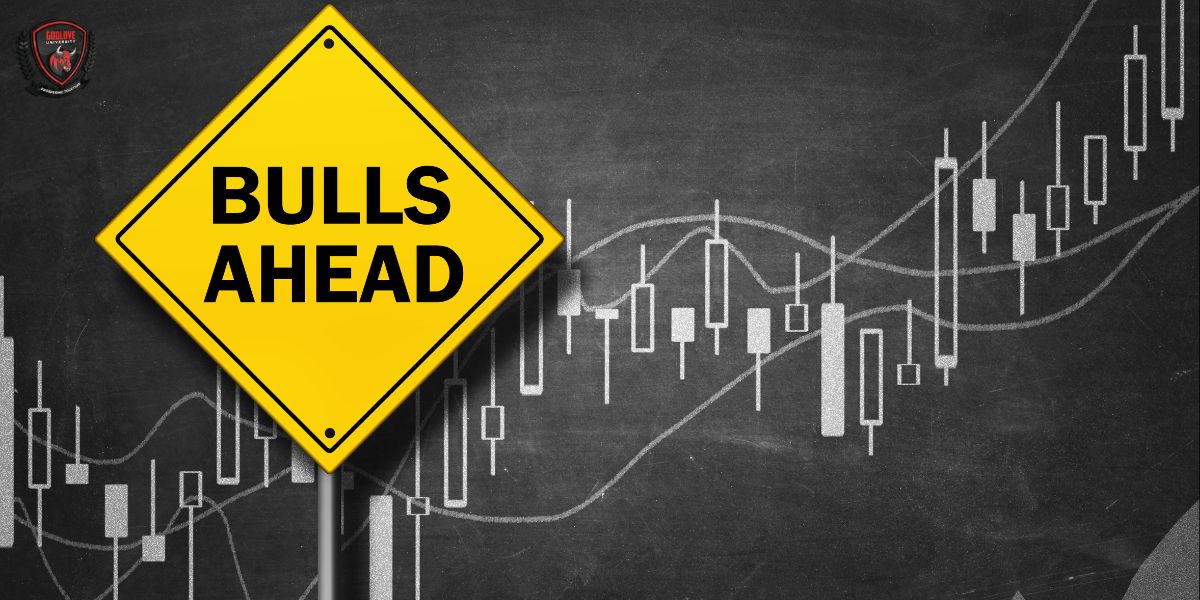Often, you will encounter the term “bullish” or “bearish” on financial markets as an experienced trader or simple observer, and it is common to refer to a market as either bullish or bearish. But what exactly does it mean when analysts announce that the market will be bullish or warn that the market trend is bearish? Understanding the difference between bull and bear markets is critical for traders, who have to make sense of the differences in their market conditions and see what’s happening.

Bullish vs Bearish: Explained
Experts in the financial sector often refer to markets as bullish or bearish based on price movements that are either positive or negative. And when analysts use the words “bear market” or “bull market,” they describe whether the market is optimistic (going up or may rise) or hopeless (going down or possibly down). The main difference between bullish and bearish markets is that confidence is high and prices are rising, or low and prices are falling.
Specifically, the words bullish and bearish describe the real market situation—whether it gains value in an “uptrend” or loses value in a “downtrend.” These methods are often affected and reflect the feelings of the sellers, whether they are buying or selling. Market prices and commodities often rise in the middle of good news and fall when there is a bad distribution. Sometimes certain groups may try to influence prices, but in a large market like forex, this does not happen.
What is the bull market?
A bull market is a financial market (whether in currencies, metals, or commodities) where prices rise or are expected to rise. General optimism, investor confidence, and expectations of strong sustainable development reflect the bull market. These conditions usually last for weeks, months, or even years, but they can be as short as a few days, depending on the circumstances. Predicting a change in trends is sometimes difficult, as the seller’s psychology and speculative behavior can play a role.

Markets become stronger when the economy is performing well or coming out of a previous recession. For example, individual revenues may rise in line with the strong GDP effect or fall when unemployment figures or interest rates are not favorable. Consumer strength and demand still dominate the bull market, so weak supply but strong demand (such as in the case of commodities such as oil or natural gas) will see rising prices as more investors want to buy goods than they are willing to sell.
What is the bear market?
The bear market is the opposite of the bull market. This market situation is characterized by falling prices and an optimistic attitude. Traders start to sell rather than buy as they try to get out of losing positions, and the start is often bad economic news or statistics such as low employment. The start of the bear market is related to psychology, as traders do not believe that something wrong will happen before it happens and take action by selling goods to avoid losses.

The bearish market can therefore be a self-fulfilling prophecy, in which a large number of hopeless traders may begin to decline by selling the stock in earnest in anticipation of a drop in price, but actually causing the price to decline on their own. This can make others feel nervous and out of place. The trend is reversed, however, when speculators enter and buy at a lower price, and prices rise slightly as traders are dragged back, leading to a bullish market.
You can benefit from both bullish and bearish markets
Traders who are familiar with the conditions described above and how to move can benefit from both the bullish and bearish markets. If you understand the meaning of bullish and bearish, you can accurately identify the cycles and when and how you benefit from them. It is possible to make money during a sinking market, and whether prices go up or down, a smart trader can come out on top.
In conclusion, navigating the dynamic landscapes of bullish and bearish markets in forex trading requires a combination of knowledge, strategy, and adaptability. The bullish market, characterized by optimism and rising prices, presents opportunities for profit, but traders must remain vigilant to avoid over-optimism and potential market corrections. Successful Forex traders recognize the importance of staying informed, employing effective risk management, and embracing a flexible mindset that allows them to capitalize on opportunities regardless of market direction. Whether the winds of the market favor the bulls or the bears, a well-informed and disciplined trader can navigate the challenges and thrive in the ever-evolving world of forex trading. As you venture forth, remember that knowledge is your compass, strategy is your guide, and adaptability is your greatest ally in the pursuit of sustainable success. Happy trading!









3 Responses
By determining these trends and patterns and look for signals of when they could be a potential reversal is key to being a well equipped trader.
As we know, “the trend is your friend” can be really useful in understanding the two spectrums in the world of Forex. But then again, as in all businesses and situations in life, you will never be 100%. Training and back testing always works wonders.
Thank you for constantly keeping us educated, no matter the experience. Your website really caters for all audiences. Keep up the good work!
This is a great read.
I can certainly relate to these extreme dramatical waves of riding the trend.
Thank you so much for your positive feedback! We’re thrilled to hear that you enjoyed the article and could relate to the extreme dramatical waves of riding the trend. Your engagement and connection with the content are what make our blog community so special. If you have any more thoughts to share or topics you’d like us to explore in future posts, feel free to let us know. We appreciate your support and look forward to bringing you more great reads in the future!